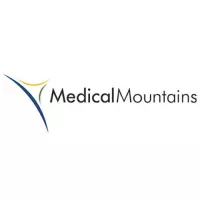Tuttlingen/Brussels – It contains sensible approaches, but leaves room for improvement: With document 2022-14, the Medical Device Coordination Group (MDCG) has presented a new position paper on the capacities of notified bodies and the availability of medical devices. Together with other associations, MedicalMountains GmbH had the opportunity in advance to comment on the draft via official MDCG observers.
"Supporting the transition to the MDR and IVDR is an ongoing process that may require further measures beyond those listed in this position paper," writes the MDCG in the introduction. For Meinrad Kempf, project manager at MedicalMountains GmbH, the term "possibly" reads more like "certainly" at first glance: "Every step towards more communication, clarity and efficiency is to be welcomed," says Meinrad Kempf, " however, more concrete statements are needed in relation to goals and timelines.”
In order to avoid bottlenecks, the MDCG advocates, among other things, reducing the complexity of conformity assessments for safe and effective existing and niche products and enabling more pragmatism. In this way, information from previous evaluations should be able to flow in. The neuralgic point "clinical data" is also considered: Additional guidelines for the practical application of MDR Article 61 and for the appropriate use of existing MDCG documents are announced. Together with the possibility for notified bodies to issue certificates subject to conditions or with the obligation to carry out PMCF studies, flexibility is increased, the MDCG is of the opinion. "However, there are still more areas where more pragmatic approaches are needed," adds Meinrad Kempf, "so that auditors have more discretion and companies have the opportunity to justify their approach with solid reasoning and clear risk management." These included, for example, biocompatibility with regard to current laboratory bottlenecks and changes to products.
Possible communication channels between notified bodies and manufacturers take up a lot of space in the position paper. Structured dialogues before and during the conformity procedure are encouraged. Webinars, workshops or information events are conceivable to highlight typical non-conformities or the structure and content of the technical documentation. "One could have taken this approach further," says Meinrad Kempf, "by consolidating the results of such discussions, publishing them and considering them to be binding as a common interpretation." generally called. The MDCG appeals to the notified bodies to reserve capacities for these groups anyway – and also to take account of the interests of SMEs when it comes to fees. "In the run-up, we made a clear plea for not only making the scale of fees more transparent, but also the respective timelines," recalls Meinrad Kempf: "Companies need this planning security in order to remain competitive." Reserve a defined percentage of manpower for new products for notified bodies, so that innovation projects gain momentum again.
All in all, the position paper shows good beginnings, Meinrad Kempf sums up. "The direction is right. The fact is, however, that action must be taken quickly. We simply can no longer afford lengthy discussions about how the individual points should be translated into reality.” Accordingly, they will remain in dialogue with all decision-makers and support pragmatic approaches, but also push for further steps. "The risk of bottlenecks in certain medical products and thus in patient care has not been averted."
The MDCG position paper "Transition to the MDR and IVDR - Notified body capacity and availability of medical devices and IVDs" is available under this link





